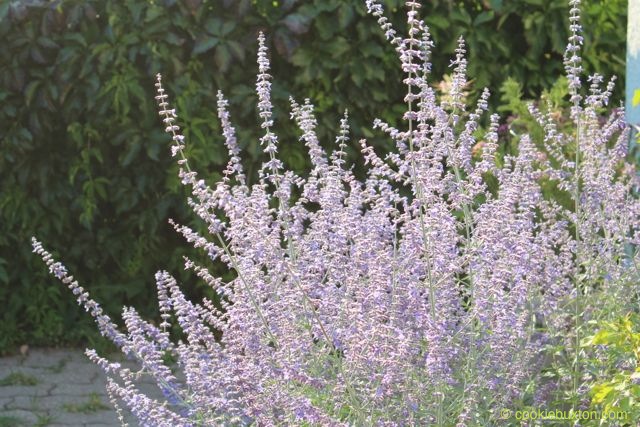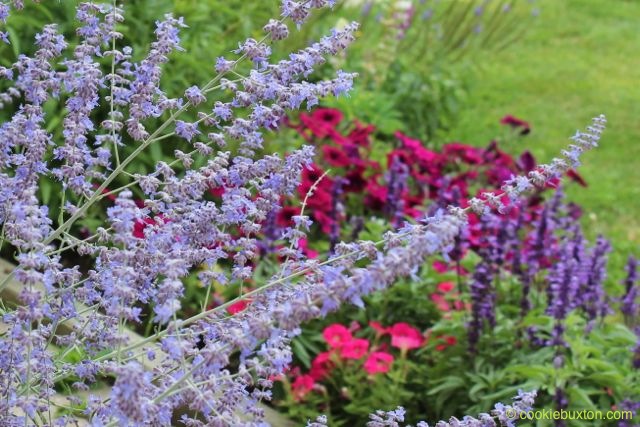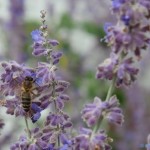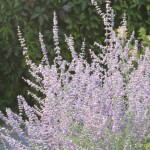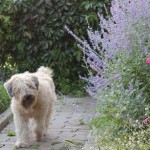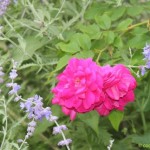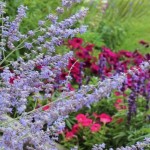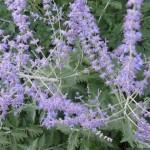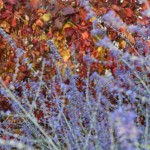Russian Sage
Perovskia atriplicifolia.
Russian Sage.
When you see, and catch the scent, of the tall, spicy Russian sage in full bloom, you will want this woody perennial in your home garden. With its airy, lavender flower spikes in bloom from July through to late fall, Russian sage brings an informal touch to the structured garden, and its long lasting, delicate blooms add a beautiful and constant element to the changing garden.
Russian sage looks attractive eary in the summer, even before it flowers, with its slender grey-green leaves offering interesting colour and texture contrasts to darker, heaver plantings. In July, as the day lilies begin to fade and before the cone flowers and black-eyed Susans appear in zone 3 gardens, Russian sage flowers will start their delightful showing, offering interest for gardeners, and nectar for the insects, right to the end of the northern growing season.
Russian sage, while having wonderful attributes, is not in fact Russian, but was named after Russian diplomat B.A. Perovski.* The plant is native to Tibet, Afghanistan, and Pakistan.
Nor is this sage a member of the culinary herb family, though its flowers are edible (I haven’t tried them, myself), and its leaves, when brushed or crushed, give off a distinctively sage aroma.
You can establish sage from seed, but getting a root cutting is an easy way to get this plant started. Once established, it will remain steadily in place, spreading by underground runners that are easy to pull up. It likes the full sun, and moderately dry to very dry soil is perfect, so this sage can be used in hard to fill hot, sunny places where you need some height and a little drama. One of my sage plants sits up against a white stucco wall on the south side of the house, where it creates a welcoming sight when I turn the corner and come into my back yard.
This is a large plant and it needs plenty of room to grow. In height, it gets to the four–foot level, and spreads almost as wide as high. There is a shorter variety ( the two-foot Little Spire), and a more upright species (P.longin), but I am happy with P. atriplicifolia for all its casual, draping appearance. It’s a striking plant, and I love seeing the soft lavender-blue flower branches after a rain, with a darkened background behind them, or late in the fall, set off against the rust and red autumn leaves, brightening my yard long into the season.
Throughout the summer and fall, Russian sage flowers offer nectar to the insect community. The the plant itself doesn’t seem to be harmed by any type of pest or disease. My original sage is over 15 years old in its present location, and it is healthy every year.
*Source: Karen Ellis, eHow Contributor
Photo and text: NK
Photo Location: home garden (all)
Copyright: cookiebuxton.com
Click on any photograph to open the gallery, then click on the right side of the photo to advance.
